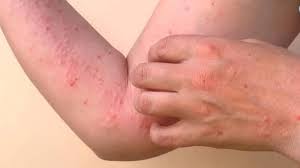Chikungunya:

The Ministry of Health in China recently initiated an emergency campaign to safeguard those at risk of Chikungunya fever illness.
- It is a mosquito-borne viral disease caused by the Chikungunya Virus (CHIKV).
- It causes fever and severe joint pain.
- The word comes from the African Makonde language and means “bent over in pain.”
- It was first described during an outbreak in southern Tanzania in 1952 and has now been reported in more than 110 countries in Asia, Africa, the Americas, and Europe.
- It is transmitted to humans by the bites of infected female mosquitoes, most commonly Aedes aegypti and Aedes albopictus mosquitoes.
- These two species can also transmit other viruses, including dengue and Zika viruses.
- An infected person cannot spread the infection directly to other persons (i.e., it is not a contagious disease).
- The symptoms of chikungunya are similar to those of dengue and Zika, making chikungunya easy to misdiagnose.
- The most common symptom is an abrupt onset of fever, often accompanied by joint pain.
- Other symptoms include muscle pain, headache, nausea, fatigue, and rash.
- Severe joint pain usually lasts a few days but can persist for months or even years.
- Serious complications are uncommon, but atypical severe cases can cause long-term symptoms and even death, especially in older people and in children under one year old.
- There is no vaccine or antiviral drug treatment for chikungunya.
- Treatment is focused on relieving the symptoms.




